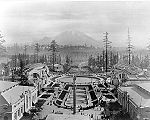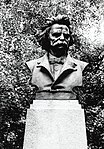University of Washington Information School
1911 establishments in Washington (state)Colleges, schools, and departments of the University of WashingtonInformation schools

The Information School (or iSchool) at the University of Washington is an undergraduate and graduate school that offers BS, MLIS, MSIM, and Ph.D. degrees. Formerly the Graduate School of Library and Information Sciences (GSLIS), the Information School changed its focus and name in the late 1990s.
Excerpt from the Wikipedia article University of Washington Information School (License: CC BY-SA 3.0, Authors, Images).University of Washington Information School
Northeast Grant Lane, Seattle University District
Geographical coordinates (GPS) Address Nearby Places Show on map
Geographical coordinates (GPS)
| Latitude | Longitude |
|---|---|
| N 47.654830555556 ° | E -122.30768888889 ° |
Address
Mary Gates Hall
Northeast Grant Lane 1851
98195 Seattle, University District
Washington, United States
Open on Google Maps









